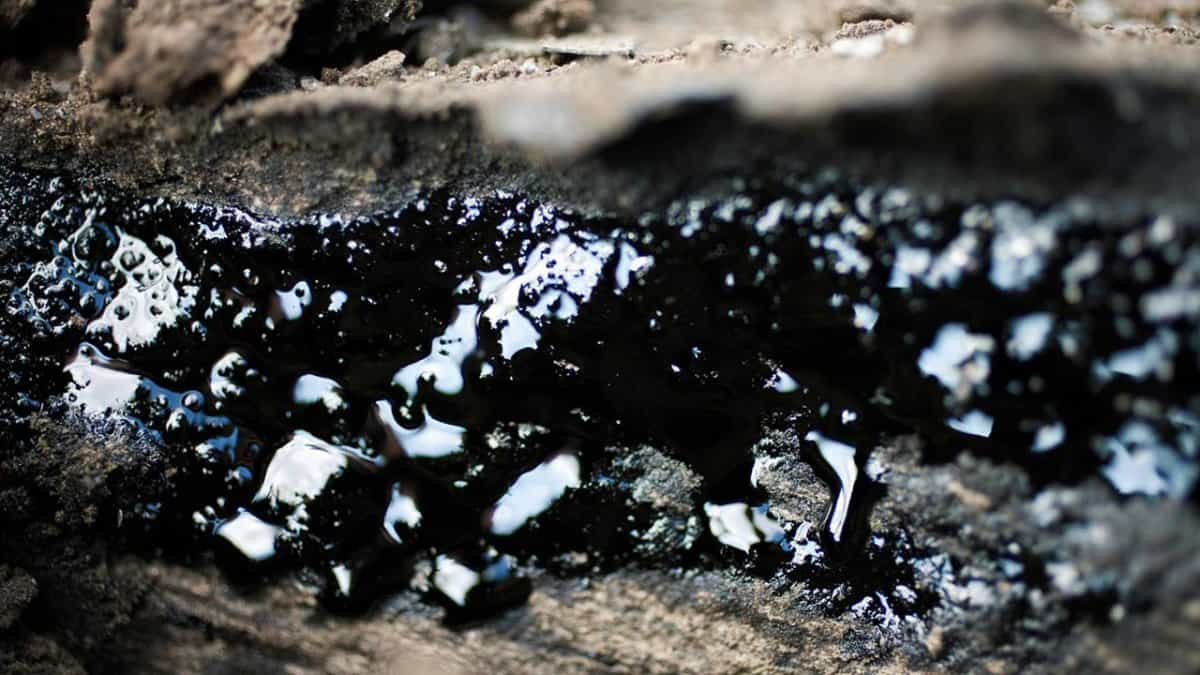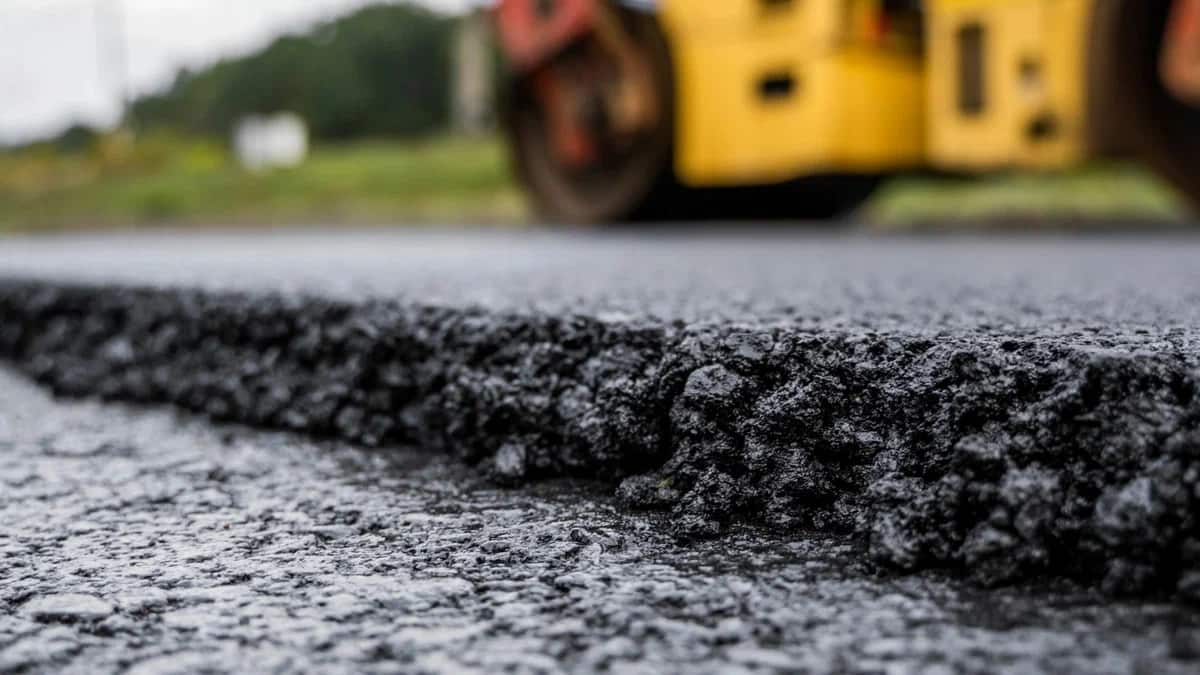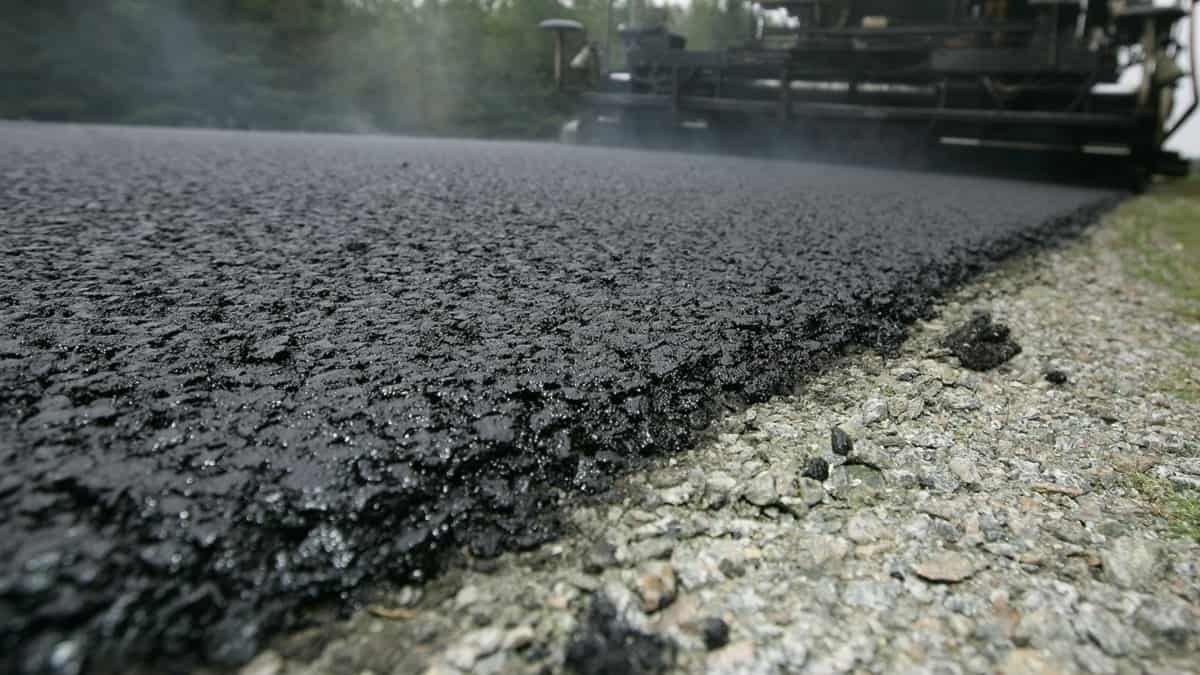Bituminous materials or natural bitumen, often known as asphalts, are utilized extensively in the construction of roadways and for that purpose, it needs to have some desirable properties. This is primarily because of the outstanding binding capabilities and waterproofing features that asphalts and bituminous materials possess, as well as their comparatively inexpensive cost. Bituminous materials are made up of bitumen, which is a dark-colored or black solid, or viscous cementitious substance. Bitumen is made up primarily of hydrocarbons with a high molecular weight, and these hydrocarbons are derived from the distillation of petroleum or natural asphalt. Bituminous materials have adhesive properties, and they are soluble in carbon disulfide.  Tars are more temperature sensitive than bitumen and are leftover from the destructive distillation of organic substances like coal, wood, or petroleum. Tars can be found as remnants after the distillation of these substances. In contrast to tar, bitumen will dissolve in petroleum oils under the right conditions. It is preferable for the bitumen to have a water content that is as low as possible in order to avoid the bitumen from foaming when it is heated above the temperature at which water begins to boil. The amount of water that is included in bitumen can be estimated by heating a known weight of samples, adding it to a pure petroleum distillate that is free of water, and then distilling the water that is produced. The amount of water that was able to be collected after it had been condensed is given as a percentage of the total weight of the initial sample. The maximum amount of water that is allowed to be present should not exceed 0.2% of the total weight. When heated, bitumen becomes less volatile and more solid as it loses its ability to flow easily. After weighing and measuring approximately 50 grams of the sample, it is placed in an oven specifically constructed for this examination and heated to a temperature of 163 degrees Celsius for a period of five hours. After the heating process, the sample is weighed once more to determine the amount of weight that was lost, and this value is expressed as a percentage based on the weight of the initial sample. When used in pavement mixes, bitumen should not show a weight loss of more than 1%, however, if the bitumen has penetration values between 150 and 200, a loss of up to 2% of its original weight is acceptable.
Tars are more temperature sensitive than bitumen and are leftover from the destructive distillation of organic substances like coal, wood, or petroleum. Tars can be found as remnants after the distillation of these substances. In contrast to tar, bitumen will dissolve in petroleum oils under the right conditions. It is preferable for the bitumen to have a water content that is as low as possible in order to avoid the bitumen from foaming when it is heated above the temperature at which water begins to boil. The amount of water that is included in bitumen can be estimated by heating a known weight of samples, adding it to a pure petroleum distillate that is free of water, and then distilling the water that is produced. The amount of water that was able to be collected after it had been condensed is given as a percentage of the total weight of the initial sample. The maximum amount of water that is allowed to be present should not exceed 0.2% of the total weight. When heated, bitumen becomes less volatile and more solid as it loses its ability to flow easily. After weighing and measuring approximately 50 grams of the sample, it is placed in an oven specifically constructed for this examination and heated to a temperature of 163 degrees Celsius for a period of five hours. After the heating process, the sample is weighed once more to determine the amount of weight that was lost, and this value is expressed as a percentage based on the weight of the initial sample. When used in pavement mixes, bitumen should not show a weight loss of more than 1%, however, if the bitumen has penetration values between 150 and 200, a loss of up to 2% of its original weight is acceptable.  In most cases, the texture of bituminous material can be evaluated using either a penetration test or a viscosity test. These tests, however, are not relevant for a particular range of consistencies; instead, the float test is employed in certain cases. The piece of testing equipment consists of a brass collar and an aluminum float, both of which are filled with bitumen to be evaluated. A temperature of five degrees Celsius is applied to the specimen while it is still in the mold, and then a screw is used to make it float. The entire testing apparatus is then allowed to float in a water bath maintained at 50 °C, and the amount of time, measured in seconds that it takes for water to make its way through the specimen plug is recorded and used to calculate the float value. At high temperatures, different grades of bitumen materials will release different volatiles depending on the temperature. Furthermore, this volatiles might catch fire, which is a highly dangerous process; for this reason, it is vital to characterize this temperature for each different grade of bitumen. The definition of the flash point that was provided by BIS was the temperature at which the vapor of bitumen momentarily catches fire in the form of a flash under certain test conditions. The lowest temperature under specified test conditions at which the bituminous material becomes lit and burns is referred to as the fire point, and it is defined as the lowest temperature. The term "softening point" refers to the temperature at which the bitumen reaches a predetermined level of pliability in accordance with the test specifications. The Ring and Ball apparatus are utilized in the performance of the test. At a specified temperature, a ring made of brass that contains a test sample of bitumen is kept in suspension in a liquid such as water or glycerin.
In most cases, the texture of bituminous material can be evaluated using either a penetration test or a viscosity test. These tests, however, are not relevant for a particular range of consistencies; instead, the float test is employed in certain cases. The piece of testing equipment consists of a brass collar and an aluminum float, both of which are filled with bitumen to be evaluated. A temperature of five degrees Celsius is applied to the specimen while it is still in the mold, and then a screw is used to make it float. The entire testing apparatus is then allowed to float in a water bath maintained at 50 °C, and the amount of time, measured in seconds that it takes for water to make its way through the specimen plug is recorded and used to calculate the float value. At high temperatures, different grades of bitumen materials will release different volatiles depending on the temperature. Furthermore, this volatiles might catch fire, which is a highly dangerous process; for this reason, it is vital to characterize this temperature for each different grade of bitumen. The definition of the flash point that was provided by BIS was the temperature at which the vapor of bitumen momentarily catches fire in the form of a flash under certain test conditions. The lowest temperature under specified test conditions at which the bituminous material becomes lit and burns is referred to as the fire point, and it is defined as the lowest temperature. The term "softening point" refers to the temperature at which the bitumen reaches a predetermined level of pliability in accordance with the test specifications. The Ring and Ball apparatus are utilized in the performance of the test. At a specified temperature, a ring made of brass that contains a test sample of bitumen is kept in suspension in a liquid such as water or glycerin.  The bitumen sample is held in place with a steel ball, and the temperature of the liquid medium is raised by 5 degrees Celsius every minute. When the molten bitumen makes contact with the metal plate that is located at a predetermined distance below, the temperature is recorded. In most cases. a higher softening point indicates reduced temperature vulnerability and is desirable in regions that experience high temperatures. The setup for the Softening Point test is shown in Figure 4.3. Bitumen possesses the quality of ductility, which enables it to be stretched or deformed to a large extent without breaking. The length, measured in centimeters, to which a standard sample or briquette of the material can be stretched without cracking or breaking is the ductility of the material. The briquette that is produced has dimensions that are precisely one centimeter square. The sample of bitumen is heated before being poured into the mold assembly, which has been put on a plate. After being cooled in the air, these samples with molds are placed in a water bath with a temperature of 27 degrees Celsius. A heated knife is used to cut away the excess bitumen, and then the surface is smoothed up. After that, the mold together with the assembly that contains the sample is placed into the water bath that is part of the ductility machine for approximately ninety minutes. After the sides of the molds have been removed, the clips are attached to the machine, and the machine is started up. The ductility value is stated in centimeters and is equal to the distance traveled up until the point where the thread breaks. The ductility value is influenced by a variety of elements, including the pouring temperature, the test temperature, the rate of pulling, and so on. The BIS has mandated that the material must have a ductility value of at least 75 cm. The figure 4.2 provides an illustration of ductility molds that are to be filled with bitumen.
The bitumen sample is held in place with a steel ball, and the temperature of the liquid medium is raised by 5 degrees Celsius every minute. When the molten bitumen makes contact with the metal plate that is located at a predetermined distance below, the temperature is recorded. In most cases. a higher softening point indicates reduced temperature vulnerability and is desirable in regions that experience high temperatures. The setup for the Softening Point test is shown in Figure 4.3. Bitumen possesses the quality of ductility, which enables it to be stretched or deformed to a large extent without breaking. The length, measured in centimeters, to which a standard sample or briquette of the material can be stretched without cracking or breaking is the ductility of the material. The briquette that is produced has dimensions that are precisely one centimeter square. The sample of bitumen is heated before being poured into the mold assembly, which has been put on a plate. After being cooled in the air, these samples with molds are placed in a water bath with a temperature of 27 degrees Celsius. A heated knife is used to cut away the excess bitumen, and then the surface is smoothed up. After that, the mold together with the assembly that contains the sample is placed into the water bath that is part of the ductility machine for approximately ninety minutes. After the sides of the molds have been removed, the clips are attached to the machine, and the machine is started up. The ductility value is stated in centimeters and is equal to the distance traveled up until the point where the thread breaks. The ductility value is influenced by a variety of elements, including the pouring temperature, the test temperature, the rate of pulling, and so on. The BIS has mandated that the material must have a ductility value of at least 75 cm. The figure 4.2 provides an illustration of ductility molds that are to be filled with bitumen. 
Properties of Natural Bitumen
When crude petroleum is refined, a by-product of this process is bitumen, which can also be called residue. Producing bitumen with varying consistencies and other desirable features can be accomplished by the use of a large number of various refining methods, such as the straight distillation process, the solvent extraction process, and many more. There may be more than one processing method used, depending on the sources and attributes of the crude oils as well as the properties of the bitumen that are required. During the process of vacuum-steam distillation, the crude oil is heated before being placed inside of a big cylindrical still. In order to expedite the evaporation of the petroleum's most volatile components and to reduce the amount of breakdown that occurs in the distillates and residues, steam is delivered into the still at the appropriate time. Collecting the volatile elements, then condensing them, and finally storing the various fractions so that they can be refined further if necessary are the steps in this process. The leftovers left over from this distillation are then fed into a vacuum distillation plant, where the pressure from the residues combined with steam will further separate out heavier gas oils. The asphalt cement that has been purified using vacuum and steam can be found in the bottom fraction of this unit. The amount of heavy gas oil that is extracted during this process can be adjusted to influence the consistency of the asphalt cement that is produced. The asphalt that results from this method is typically of a more malleable consistency. When asphalt is allowed to cool down to room temperature, it transforms into a viscous material that is semi-solid.  It is standard procedure to heat bitumen in order to lessen its viscosity. There are some circumstances in which the utilization of liquid binders, such as cutback bitumen, is favored. When working with cutback bitumen, an appropriate solvent is utilized in order to reduce the viscosity of the bitumen. It is preferable to use cutback bitumen from both an environmental and economic standpoint. The solvent that was present in the bituminous material will eventually evaporate, and the aggregate will be bound together by the bitumen. For the building and maintenance of bituminous roads in cold weather, cutback bitumen is typically employed. Naphtha, kerosene, diesel oil, and furnace oil are the types of distillates that are utilized in the process of preparing cutback bitumen. There are several distinct varieties of cutback bitumen, including those with fast curing (RC), medium curing (MC), and slow curing (SC) (SC). For patching and surface dressing, RC is the material that is recommended. It is recommended to use MC for premix that contains a lower percentage of fine aggregates. The term "premix" refers to the usage of SC in conjunction with a significant number of fine aggregates. A bitumen emulsion is a type of liquid product in which bitumen is suspended in an aqueous medium in a finely divided form and stabilized by appropriate material. In India, cationic type emulsions are typically employed for most applications. The emulsion contains roughly sixty percent bitumen, with the remaining forty to forty-five percent consisting of water. After the emulsion has been spread on the roadway, it begins to degrade, which results in the release of water, and the mixture begins to harden. The length of time required for the setting process is proportional to the grade of bitumen. According to Indian Standard 8887-1995, the viscosity of bituminous emulsions can be tested.
It is standard procedure to heat bitumen in order to lessen its viscosity. There are some circumstances in which the utilization of liquid binders, such as cutback bitumen, is favored. When working with cutback bitumen, an appropriate solvent is utilized in order to reduce the viscosity of the bitumen. It is preferable to use cutback bitumen from both an environmental and economic standpoint. The solvent that was present in the bituminous material will eventually evaporate, and the aggregate will be bound together by the bitumen. For the building and maintenance of bituminous roads in cold weather, cutback bitumen is typically employed. Naphtha, kerosene, diesel oil, and furnace oil are the types of distillates that are utilized in the process of preparing cutback bitumen. There are several distinct varieties of cutback bitumen, including those with fast curing (RC), medium curing (MC), and slow curing (SC) (SC). For patching and surface dressing, RC is the material that is recommended. It is recommended to use MC for premix that contains a lower percentage of fine aggregates. The term "premix" refers to the usage of SC in conjunction with a significant number of fine aggregates. A bitumen emulsion is a type of liquid product in which bitumen is suspended in an aqueous medium in a finely divided form and stabilized by appropriate material. In India, cationic type emulsions are typically employed for most applications. The emulsion contains roughly sixty percent bitumen, with the remaining forty to forty-five percent consisting of water. After the emulsion has been spread on the roadway, it begins to degrade, which results in the release of water, and the mixture begins to harden. The length of time required for the setting process is proportional to the grade of bitumen. According to Indian Standard 8887-1995, the viscosity of bituminous emulsions can be tested.  There are three distinct varieties of bituminous emulsions available, and they are referred to as Rapid setting (RS), Medium setting (MS), and Slow setting (SC). Emulsions of bitumen make excellent binders for the construction of mountain roads. In locations where heating bitumen or aggregates can be challenging. For surface dressing tasks, rapid setting emulsions are typically utilized. When it comes to premix projects and patch repair work, the best emulsions to use have a medium setting time. During the wet season, you should use emulsions that are set more slowly. When bituminous priming is applied to a road surface, the distillate is taken up by the surface of the road. Therefore, the porosity of the surface is directly related to the amount of absorption. Primers made of bitumen are helpful for applying to stabilized surfaces as well as macadam base courses that have been bonded with water. Primers made of bituminous material are typically made on road construction sites by combining penetrating bitumen with petroleum distillate. Bitumen and bituminous mixtures can have their qualities improved by using certain additions or blends of additives that are collectively referred to as bitumen modifiers. The term "modified bitumen" refers to bitumen that has been altered by the addition of certain modifiers. It is recommended that polymer-modified bitumen (PMB) or crumb rubber modified bitumen (CRMB) be used solely in the wearing course, but this recommendation is subject to change depending on the requirements of extreme climate fluctuations. IRC: SP: 53-1999 has provided the comprehensive standards for modified bitumen, which can be found here.
There are three distinct varieties of bituminous emulsions available, and they are referred to as Rapid setting (RS), Medium setting (MS), and Slow setting (SC). Emulsions of bitumen make excellent binders for the construction of mountain roads. In locations where heating bitumen or aggregates can be challenging. For surface dressing tasks, rapid setting emulsions are typically utilized. When it comes to premix projects and patch repair work, the best emulsions to use have a medium setting time. During the wet season, you should use emulsions that are set more slowly. When bituminous priming is applied to a road surface, the distillate is taken up by the surface of the road. Therefore, the porosity of the surface is directly related to the amount of absorption. Primers made of bitumen are helpful for applying to stabilized surfaces as well as macadam base courses that have been bonded with water. Primers made of bituminous material are typically made on road construction sites by combining penetrating bitumen with petroleum distillate. Bitumen and bituminous mixtures can have their qualities improved by using certain additions or blends of additives that are collectively referred to as bitumen modifiers. The term "modified bitumen" refers to bitumen that has been altered by the addition of certain modifiers. It is recommended that polymer-modified bitumen (PMB) or crumb rubber modified bitumen (CRMB) be used solely in the wearing course, but this recommendation is subject to change depending on the requirements of extreme climate fluctuations. IRC: SP: 53-1999 has provided the comprehensive standards for modified bitumen, which can be found here.  It is important to note that the efficacy of PMB and CRMB is based on the temperature being strictly controlled throughout the construction process. The following is a list of advantages that come with using modified bitumen:
It is important to note that the efficacy of PMB and CRMB is based on the temperature being strictly controlled throughout the construction process. The following is a list of advantages that come with using modified bitumen:
- Reduced sensitivity to day-to-day and seasonal shifts in temperature
- When the temperature of the pavement is high, there is greater resistance to deformation.
- Better age resistance properties
- Longer fatigue resistance for the mixing.
- Increased cohesiveness between the aggregates and the binder
- Cracking and reflected cracking protection and prevention
The type of mix and the architecture of the bitumen both have a role in determining its desirable qualities. In general, bitumen ought to have the following desirable qualities: The bitumen shouldn't be overly sensitive to changes in temperature: during the warmest weather, the mixture shouldn't become too pliable or unstable, and during the coldest weather, the mixture shouldn't become too brittle and cause cracks. It is important that the bitumen have sufficient viscosity when it comes time to combine and compact it. This can be accomplished through the use of cutbacks or emulsions of appropriate grades, as well as through the heating of the bitumen and aggregates before they are mixed together. It is important that the bitumen and aggregates used in the mix have a sufficient level of affinity for one another and adherence to one another. There are a few different tests that can be used to evaluate the characteristics of bituminous materials. In order to analyze various aspects of bituminous materials, standard laboratory tests consisting of the following procedures are typically carried out. 
- Evaluation of ductility
- The test of the softening point
- Measurement of specific gravity
- Examination of Viscosity
- Evaluation of the Flash and Fire Point
- Float test
- An analysis of the water content
- The loss during the heating test
It does this by determining the amount of depth, in tenths of a millimeter that a standard loaded needle can penetrate vertically in five seconds. This gives an indication of how hard or how soft the bitumen is. The apparatus and the testing technique had been standardized by BIS. The penetrometer is made up of a needle assembly that has a combined weight of one hundred grams and a mechanism that can release and lock in any position. After the bitumen has been liquefied to the point where it can be poured, it is well mixed and then put into containers to a depth that is at least 15 millimeters deeper than the projected penetration. It is recommended that the test be carried out at a temperature of 25 degrees Celsius. It is important to note that the value of the needle's penetration is significantly affected by any errors made in determining the pouring temperature, the size of the needle, the amount of weight that is placed on the needle, and the test temperature. A bitumen grade of 40/50 indicates that the penetration value when measured under conventional test conditions, falls somewhere in the range of 40 to 50. In warmer areas, a penetration grade that is one notch lower is recommended. A diagrammatic representation of a Penetration Test setup can be shown in Figure 4.1.

0
0